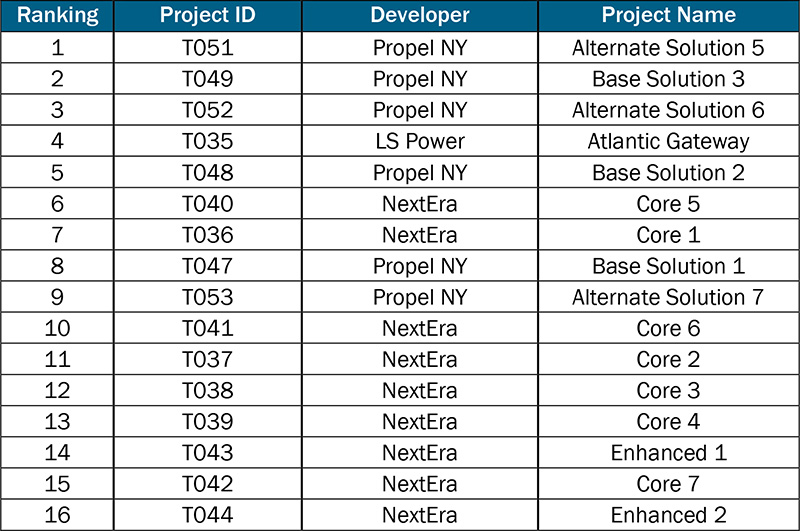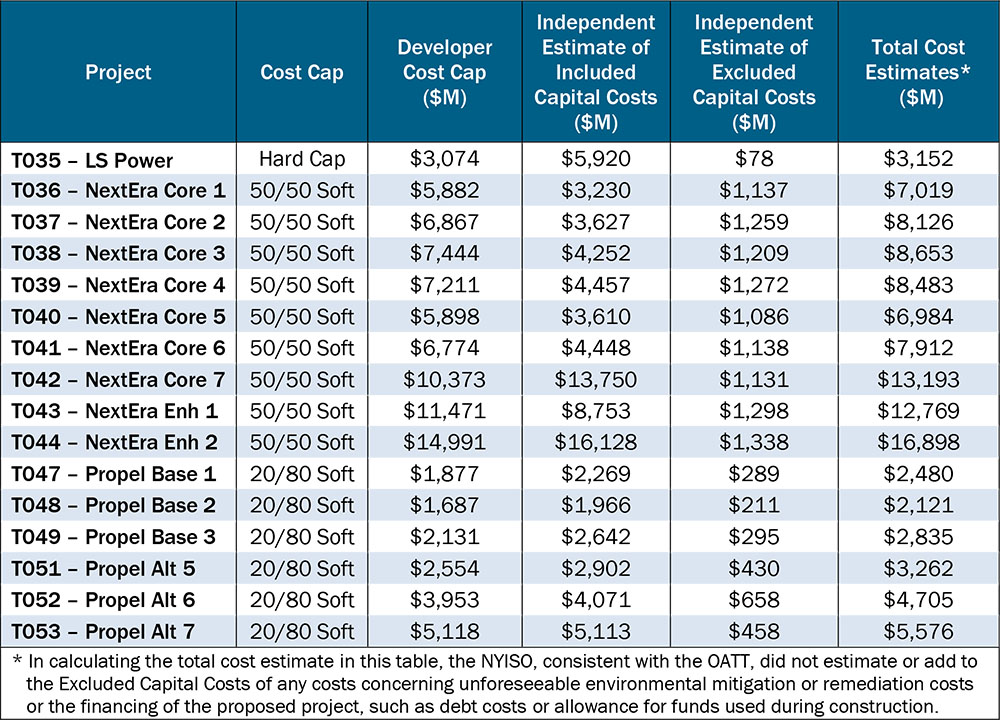NYISO staff last week selected a proposal by Propel NY Energy to meet the ISO’s Long Island Public Policy Transmission Needs (PPTN) solicitation for transmission lines to export offshore wind energy and unbottle constraints across the island.
Propel, a partnership between the New York Power Authority and NY Transco, proposed three new 345-kV lines on the island. In a draft report released May 8, staff said the proposal would add “a strong 345-kV backbone to the Long Island transmission system that not only allows the delivery of offshore wind power but also will effectuate the efficient transfer of power in the future, providing optionality for resource planning and expansion needed to achieve” the state’s climate goals.
 NYISO rankings for top-tier transmission projects from PPTN | NYISO
NYISO rankings for top-tier transmission projects from PPTN | NYISOThe goal of the PPTN was to add at least one bulk transmission intertie cable to increase Long Island’s offshore export capability by at least 3,000 MW and upgrade associated local transmission facilities to accompany the growing scale of wind power development off the Long Island coast, according to the report (20-E-0497).
Propel, along with the Long Island Power Authority and Consolidated Edison, would build two lines between Shore Road and Sprain Brook and one between East Garden City and Tremont for $3.26 billion. Propel, however, proposed a soft cost cap of $2.9 billion with a commitment to not recover 20% of included capital costs above the cap from ratepayers, which was one of the major evaluation criteria the ISO considered.
Staff also found that the proposal has a potential economic benefit of up to $3.6 billion over 20 years and, although not required by the PPTN, would relieve the 138-kV Barrett-Valley Stream congestion constraint.
NYISO presented the report to the Transmission Planning Advisory Subcommittee on Thursday.
Mark Younger, president of Hudson Economics, contended that the ISO’s “presented results are not detailed enough” and what stakeholders have seen “has been very high level.” He argued that because NYISO did not conduct a transmission security analysis examining the potential impact on the capacity of neighboring zone interfaces, the ISO’s stated benefits may be overstated.
“It’s like [NYISO] is the old economist, where [you’re] on a desert island and have a can of food but are assuming there is also a can opener,” he said. “It would be kind of embarrassing if after the line goes in that the ISO discovers that you have too much capacity in Zones H through K.”
 Independent estimate and voluntary cost cap for PPTN transmission projects | NYISO
Independent estimate and voluntary cost cap for PPTN transmission projects | NYISO
NYISO staff acknowledged that although they did not perform that specific analysis, “overall New York state will benefit from this public policy transmission need, and this is our recommendation to our board.”
Doreen Saia, an attorney with Greenberg Traurig, sought clarification on a potential appeals process, which NYISO confirmed was possible but added that the board is not looking to receive any more presentations.
The ISO will present its recommendation to both the Business Issues and Management committees on May 24 and 31, respectively, seeking stakeholder advisory votes before advancing to the Board of Directors for final approval. The board will consider any submitted written comments or requests sent to PublicPolicyPlanningMailbox@nyiso.com.


